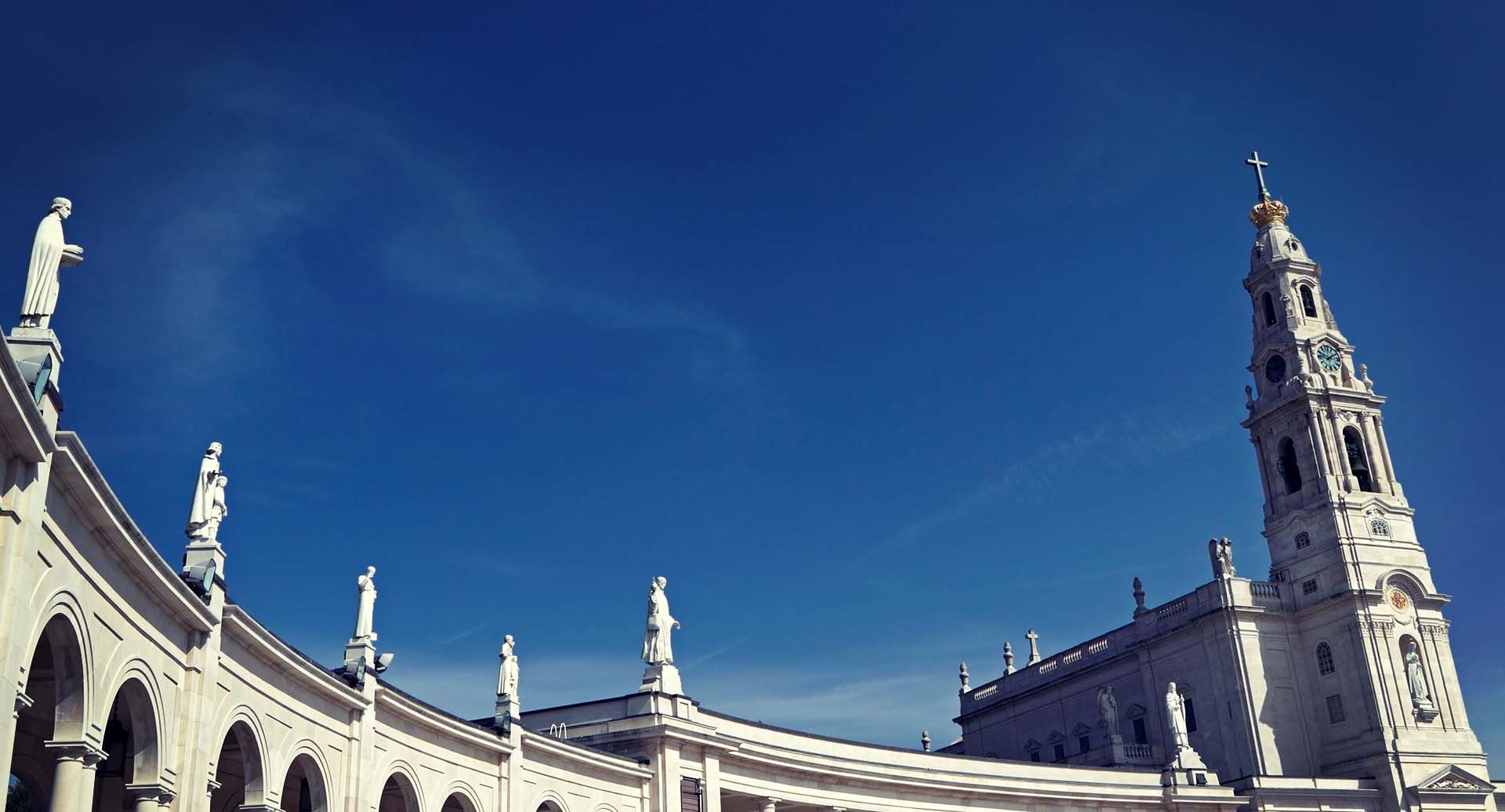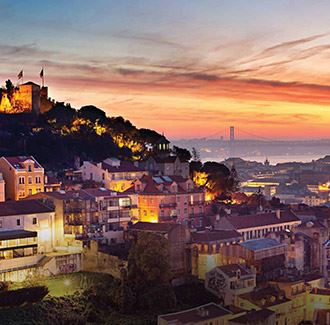Fatima and its Mysteries
Fatima was elevated to town in 1977 and gained the city status in 1997. Due to its history and the events that once has witnessed, many describe it as the land of miracles or the city of peace. The year 1917 left an indelible mark in this special Portuguese corner, at the time a peaceful and bucolic place where little or nothing happened, except the rural and simple life of its inhabitants. It was precisely in that year that three children witnessed a phenomenon later known as the milagre de Fátima (Fatima miracle).
On May 13, a lady described as brighter than the sun and involved in an aura of light, appeared to three little shepherds named Lucia, Jacinta and Francisco, in a place called Cova da Iria, now one of the most important destinations for the Christian faith. Since then, Fatima has become an altar to the world — a pilgrimage place full of spirituality and a meeting point for believers.
The places of faith
In Fatima, you can feel very close to the sacred stories in several different places. The Sanctuary of Fatima (where thousands of pilgrims arrive every year) is one of the most important Marian shrines in the world and it has been expanded over the years, in order to satisfy the needs of its visitors. During your visit, you will be able to find several monuments, prayer places as well as a large amount of symbolic references.
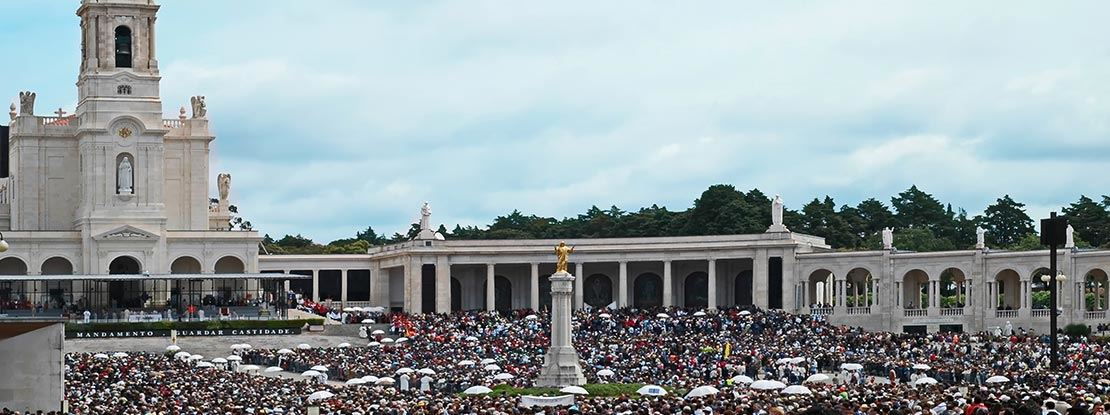
Let’s begin with the Chapel of the Apparitions — built on the exact spot where the three local children guarantee to have seen the Virgin Mary image. This simple church is in fact a replica of the original chapel that was built in 1919, just a few years after the apparitions.
In 1928, the Basilica of Our Lady of Fatima started to be build — it was inspired by the neo-Baroque architecture and it was built with stone from the region. This church was designed by a Dutch architect named Gerard Van Kriechen and its construction was continued by the Portuguese architect João Antunes. It has a central tower (decorated with a bronze crown on the top) and a famous sequence of colonnades beautifully decorated with ceramic panels representing the Way of the Cross. It is also here that are the tombs of the three children that assure to have seen the Virgin Mary.
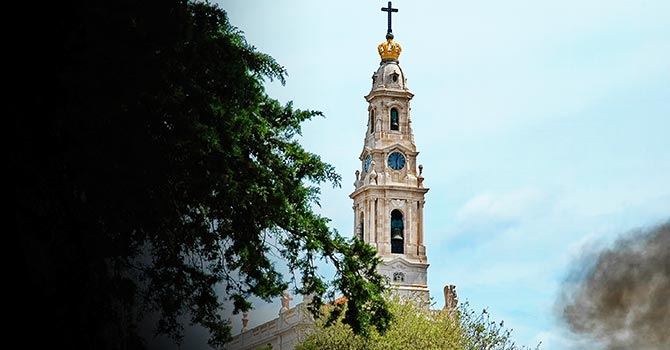
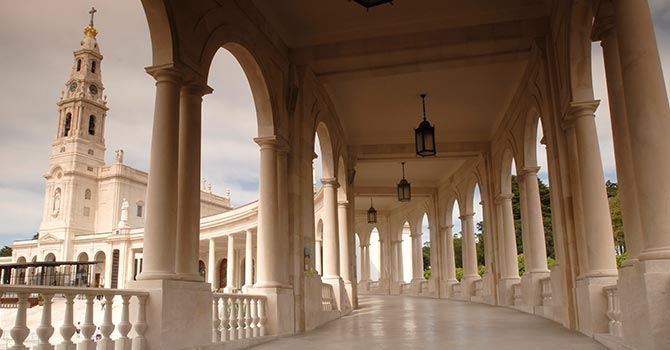
Aljustrel, the village of the three shepherds
Very close to the sanctuary (about 3 kilometres) you will find Aljustrel — a quiet village where Lucia, Francisco and Jacinta were born. The Shepherds' House (where Jacinta and Francisco lived) is well preserved and it still keeps the shepherds’ personal objects and furniture. If you choose to visit it, you will learn more about the two children’s childhood and also about the rural way of life back then, in Portugal. Nearby, in Valinhos, stands the house where Lúcia lived until she was 14 years old. Still in Aljustrel, we suggest a visit to the village house Museum where the life and customs of this region inhabitants are described in a very interesting ethnographic exhibition.
Close to Fatima, so much to discover among nature
But there is a lot more to discover while we are at Fatima. Nearby (about 10 kilometres) is placed the Serras de Aire e Candeeiros Natural Park, a protected area known for its natural caves. Due to the effects of water and the passage of time, these particular caves have amazing formations that surely worth a visit. The Mira de Aire caves — one of the 7 Natural Wonders of Portugal — are a nice example. Take a journey through the mountain’s depths and discover an underground unique beauty.
Besides keeping archaeological treasures (like dinosaur footprints) the park is also home for a great diversity of flora and fauna. For example, it has about 18 species of bats — the animal that was chosen to be the symbol of this beautiful Portuguese natural corner.
The mysterious castles route
Not far away from Fatima, we suggest a travel in time, through the route of the castles — a circuit that is made of history, mysteries, legends and traditions. Only about 12 kilometres from Fatima, you will find the Ourem Castle, regarded as one of the most charismatic Portuguese castles. Located on the top of a hill, it has a privileged view to the Ourem medieval village and even to Fatima.
A little bit further, but not too much (about 20 kilometres), stands the Leiria Castle, one of the great medieval treasures of the River Lis’ city. Besides its lovely view to Leiria, it holds some truly historical treasures, such as the Church of our Lady of Mercy, the former Royal Palace and the Menagem Tower.

Following this route, you can also visit the symbolic Castle of Porto-de-Mós, situated in the village Porto de Mós (also in Leiria) and linked to the Portuguese literature — it was immortalized by the poet Luís de Camões in his epic book, Os Lusíadas.
That is why you should consider a visit to Fatima. For many, a quiet place of faith and prayer, and for others, a refuge with natural charms and great historical treasures.
